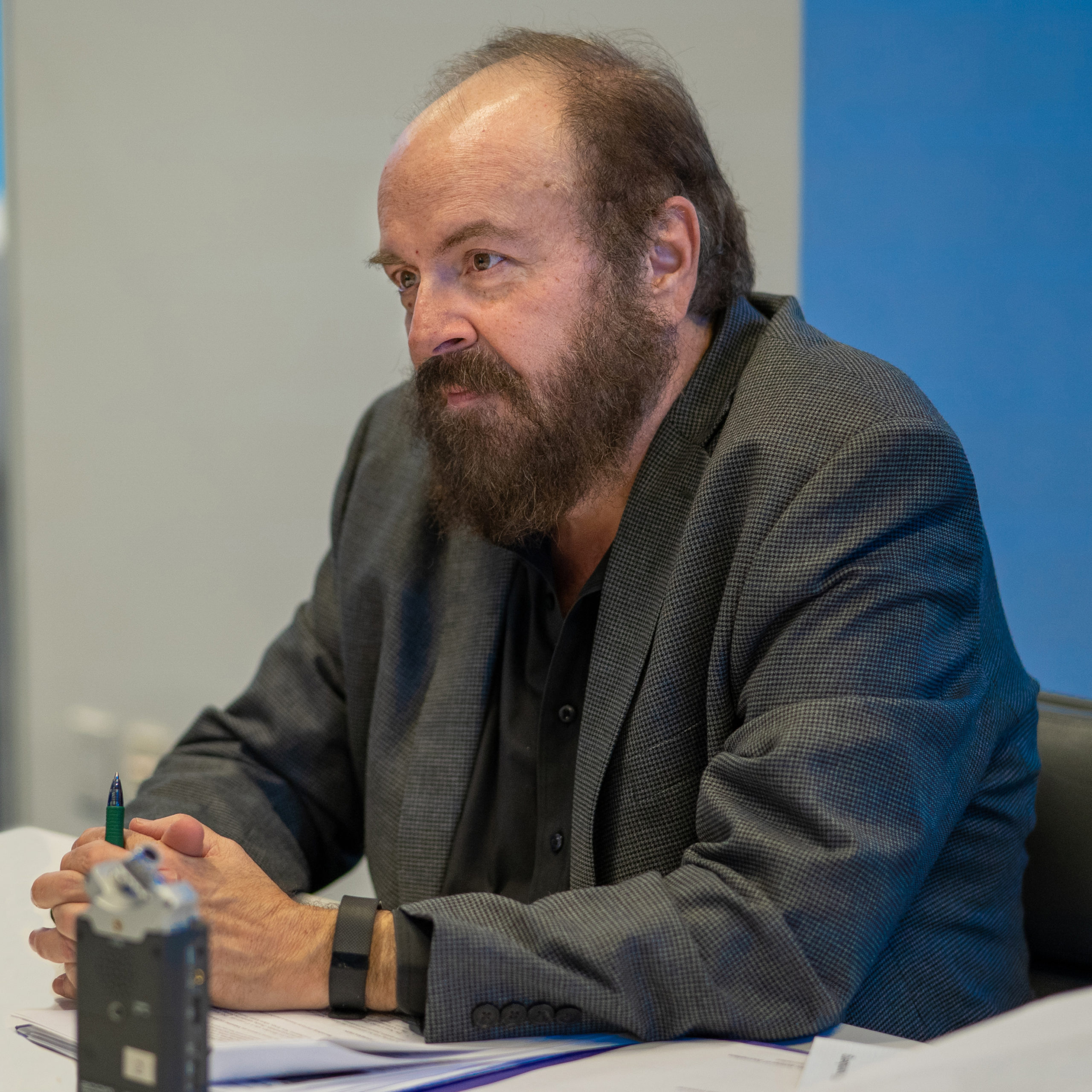Of the thousands of stories written and broadcast to coincide with this month’s anniversary of the Sept. 11, 2001, terrorist attacks, few have focused on what newsrooms, across the range of national and local media, learned from covering the catastrophe.
The two of us — former Wall Street Journal reporting colleagues from the pre-9/11 years there — each have written about Pulitzer Prize-winning journalism by publications that covered that tragedy.
(Rotbart’s recent book “September Twelfth: Ground Zero on 9/11 with The Wall Street Journal” examines the work that resulted in that newspaper’s 2002 Pulitzer for Breaking News Reporting. And Harris’s 2016 “Pulitzer’s Gold: A Century of Public Service Journalism” devotes a chapter to The New York Times’ 9/11 coverage, which won that paper 2002’s Public Service Prize. Harris also wrote a 10-years-later article for Poynter, in 2011, about the Journal’s work.)
The Times and the Journal were two of the most prominent news organizations to rise to the many challenges that the 9/11 terrorist attacks presented. However, they were far from alone. Broadcast and cable news channels provided vivid, uninterrupted wall-to-wall coverage, with videos and field reports that none of us can forget.
The Washington Post and Los Angeles Times produced same-day 9/11 editions headlining the attacks. The Associated Press offered real-time updates, harnessing its staff to gather reactions from around the globe. And multiple emerging online news sites foreshadowed their eventual rise to prominence with original and timely reporting.
Before the media’s review of this 20-year-old tragedy fades, we want to highlight some lessons that news organizations of all ilks can glean from the Times’ and the Journal’s experience of covering what has been called our generation’s Pearl Harbor.
This question-and-answer exchange is the result.
Did either the Journal or the Times have contingency plans in place to cover a major disaster such as 9/11 effectively?
Roy Harris: Neither paper had established plans for dealing with a catastrophe the magnitude of Sept. 11, although the Times was better suited for it because the paper’s basic job often involves covering New York disruptions on a range of levels.
It would have been difficult to design a “drill” at the Times that would model such a massive disaster, with so many variables.
From a production standpoint, though, the Times did have models to follow — including a system for clearing ads from its first section and making space available for unexpected blocks of news in a crisis.
The Times had one other advantage aiding first-day coverage: that it had been geared up on 9/11 to report on New York City’s primary election that day. That allowed the reassignment of editors and reporters on short notice — especially after the primary was canceled.
Dean Rotbart: No one at the Journal ever imagined a disaster that would decimate its newsroom and lock out all reporters and editors for nearly a year.
The Journal did run backup drills from time to time, contemplating the possibility of a power blackout or a weather system that would require a very temporary relocation.
The South Brunswick, New Jersey, administrative offices of Dow Jones, the Journal’s owner, is 50 miles southwest of the paper’s Lower Manhattan newsroom. Those offices had training rooms that most senior editors knew could, in a pinch, be converted to temporary news desks. On 9/11, roughly 40 Journal staffers — about one-tenth of its regular New York workforce — had run the gantlet to South Brunswick and were responsible for editing and composing the next day’s edition.
How did the culture at the Journal — driven from its main newsroom and headquarters — come into play on 9/11?
Rotbart: In the Journal’s pop-up newsroom in South Brunswick, New Jersey, and the apartments scattered throughout the five boroughs of New York and New Jersey where Journal staffers assembled in small groups, the “ghosts” of past newsroom leaders were undoubtedly present.
Dating back to the early 1940s when Bernard “Barney” Kilgore began transforming the Journal from a failing 33,000-circulation trade newspaper into one of the country’s most-respected and best-read newspapers, an unbroken chain of leaders passed on and reinforced Kilgore’s core professional tenets.
These included giving reporters wide latitude to work independently and to take reasonable risks in the effort to elevate the paper’s journalistic edge. On 9/11, the Journal’s staffers didn’t have to be told what to do. On their own, they reasoned how they could be most helpful, and they set about it
The Journal’s culture also involved making sure that most reporters with regular industry beats spent time on general “spot news,” as well. So writing on topics of general interest was familiar even to its business-news specialists.
One unassailable standard governed on 9/11 as it did every other day: Reporters had to get their facts straight with no exceptions. Integrity and professionalism remained their guide rails.

In a joint YouTube broadcast, Dean Rotbart (left) appeared with Roy J. Harris Jr.
Both the Times and Journal are known for skilled top newsroom editors, with solid managerial structures below them. How were these personalities responsible for leading the staff to such extraordinary results under extreme pressure?
Rotbart: If ever anyone needed an illustration of why it’s essential for a news organization to have a “deep bench” of competent editors, The Wall Street Journal’s experience on 9/11 is a near-perfect example. Until early that afternoon, Paul E. Steiger, the paper’s managing editor and journalistic North Star, was missing and feared dead.
With bridges and tunnels shut down, Steiger’s four deputy managers were unable to reach the emergency pop-up newsroom in South Brunswick. Hardly missing a beat, Alan Murray, then the Washington, D.C., bureau chief, assigned and oversaw most of the front-page stories that day. Marcus Brauchli, national news editor, working from his home in Brooklyn Heights, generated the “sked” — the blueprint for the next day’s newspaper and kept a running log of who had reported in and who was still missing.
Bureau chiefs Karen Blumenthal, Kevin Helliker, and Jonathan Friedland, in Dallas, Chicago, and Los Angeles, respectively, mobilized their staffs and handled overflow editing duties and coverage from other bureaus.
Perhaps, most impressively, Frank James “Jim” Pensiero, a senior newsroom administrator who managed the Journal’s newsroom budget and negotiated contracts, among other managerial tasks, assumed responsibility in South Brunswick for assigning personnel and overseeing copyediting and production crews.
If need be, any one of these newsroom lieutenants — and at least a dozen others at the Journal, could readily have permanently filled Steiger’s oversized shoes if they were tasked with the responsibility.
Steiger’s most significant influence on 9/11 occurred well before that day, by hiring, promoting and leading his deputies by example.
Harris: Veteran Times executive editor Howell Raines and brand new managing editor Gerald Boyd played key roles in redirecting nearly the entire New York staff to cover the World Trade Center disaster. They freed up immense space in the next day’s paper, and in editions on subsequent days, and scheduled extra editors’ meetings each day to allow coverage to expand quickly, with superior planning.
A whole new regimen had to be established for covering 9/11’s “disaster beat” that didn’t exist the day before. What kinds of coverage had to be created on the fly? And what did the Times and Journal personal learn from having to make that adjustment?
Harris: At the Times, one huge success was its extraordinary conception and execution of a whole new way of writing about victims. Thousands were missing in the Twin Towers attacks, in a form of devastation that made it impossible to identify bodies. So the vital task of producing obituaries became quite chaotic.
That pressure on the Times resulted in a special section labeled “Portraits of Grief.” The approach, specifically cited as part of “A Nation Challenged” — the special daily section noted in its Public Service Pulitzer citation — evolved from a plan by editor Christine Kay. She designed a system in which reporters prepared 200-word mini-profiles of those who were missing in the wake of the disaster. The profiles avoided the normal “death-notice” information, instead picking one feature of the person that set her or him apart.
Beyond concentrating related information in the same place for readers, managing editor Boyd noted that daily meetings about what belonged in the section inspired a heightened level of staff input. “I was always amazed how on a given day, someone I never would have thought of would have a brilliant idea,” Boyd said. “There was really a belief that people could be heard.”
Rotbart: The Journal beginning on Sept. 12 was a different newspaper than it had been on Sept. 11, and it has never returned to its old self.
Most significantly, for decades, the Journal’s three front-page features — left column, middle column, and right column — were think pieces, analysis, and other in-depth or quirky articles. But they didn’t contain breaking news. A column running on the left-hand side on a Monday could just as readily run the following Friday, or even a few weeks later, without seeming dated.
But breaking news became a staple of the Journal’s front page beginning on Wednesday, Sept. 12, with an increased focus on politics, foreign policy, and national security throughout the newspaper.








